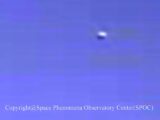The Choshi Incident: Unraveling the Mystery of Japan's Greatest Forgotten UFO Case
The Choshi Incident: Unraveling the Mystery of Japan’s Greatest Forgotten UFO Case

Strange metal fragments rained from the sky. A chilling analysis revealed an impossible alloy. And it all ended with a shocking military cover-up. This is the story of the lost “Choshi Incident.”
In 1955, the Japan Flying Saucer Research Association (JFSA) was founded by the late Kinichi Arai, becoming the nation’s first civilian UFO research organization. Its roster was nothing short of remarkable. Alongside dedicated ufologists like Junichi Takanashi and Morihiro Saito were some of the giants of post-war Japanese culture: literary icons Yukio Mishima and Shintaro Ishihara, the avant-garde composer Toshiro Mayuzumi, the “father of Japanese rocketry” Hideo Itokawa, and celebrated sci-fi author Shinichi Hoshi. At its peak, the JFSA boasted over 700 members scattered across the country.
Their official journal, Uchuki (meaning “Spacecraft”), was published 32 times between 1956 and 1960. In an era long before word processors, each issue—sometimes running up to 60 pages—was painstakingly typed onto stencils and mimeographed by hand. This was a true labor of love, a testament to the members’ dedication.
But Uchuki was never for sale. It was a private publication, distributed only to members and a select few. When the JFSA ceased operations in 1960, the journals vanished from public view, gathering dust on the bookshelves of former members. As these individuals passed away, many copies were likely discarded by unknowing families, lost to time. It’s said that even Kinichi Arai himself did not possess a complete set in his later years.
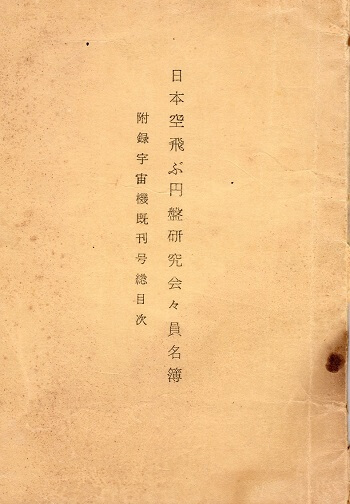
A Passionate Quest
A few years ago, I came into possession of several back issues of Uchuki, and I was stunned by what I read.
The members came from all walks of life, and their views on UFOs were just as diverse. While many believed they were extraterrestrial craft, others held spiritual or even skeptical perspectives. Uchuki was a true open forum, publishing a wide range of opinions without promoting a single doctrine.
Despite the pre-internet era’s immense challenges in accessing foreign information, the members went to extraordinary lengths to obtain the latest news from the West. They were among the first in Japan to report on now-classic cases like the Flatwoods Monster and the contactee claims of George Adamski. Some articles were astonishingly ahead of their time, even referencing Jacques Vallée’s pre-Magonia concepts.
The pages overflowed with the fiery passion that Chairman Arai and his fellow members had for the UFO mystery.
Recognizing Uchuki as a landmark monument in Japanese UFO history, I resolved to resurrect it for a new generation. Armed with a vintage membership roster, I tracked down the addresses of several former members. My search was often heartbreaking. Most of the people I sought had already passed away, and their families had no memory or record of the journals.
Still, with the help of a few surviving members and their families, I managed to locate and digitize almost the entire collection, including photocopies. It’s a slow and painstaking process, but I’ve accepted it as my life’s work.
It was while reading these back issues that I discovered something else: major incidents, once common knowledge among the members, that have been almost completely forgotten today.
Of these, one stands out. It was the JFSA’s first major field investigation and an event that Kinichi Arai later called “the one that left the deepest personal impression.” This is the story of the Choshi Incident.
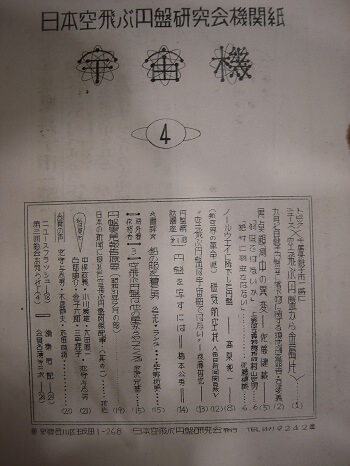
The Forgotten Incident
The report, titled “Metal Fragments from a Flying Saucer? Scattered Across Chiba Prefecture’s Choshi City,” appeared in Uchuki No. 4.
The events unfolded on the night of September 7, 1956. Across Japan, amateur astronomers were pointing their telescopes to the sky, eager to witness the closest approach of Mars in years.
On the roof of Choshi City’s Fourth Municipal Junior High School, a teacher and 30 students were setting up for the celestial event. But at around 7:30 PM, their attention was ripped away by something else: a black object streaking across the sky at incredible speed, moving from north to south over the city from the direction of the Kashima Sea. It was also seen from the Karako-cho district of the city.
At roughly the same time, in the Kasuga-cho district, witnesses saw a hemisphere-shaped object, like an inverted bowl, glowing orange and brighter than the approaching Mars. It flew in a perfectly straight line from east to west.
If the story ended there, it would be just another UFO sighting. But what followed was a phenomenon almost unprecedented in global UFO lore. Moments after the sighting in Karako-cho, a strange, thin piece of metal fluttered through the open window of a witness’s home.
The next morning, identical fragments were found scattered over a wide area, including the grounds of the Choshi Fourth Elementary School. The metal pieces resembled tin foil. They were tiny and incredibly thin—about 4-5 cm long, 1 mm wide, and only 10 microns thick. They shimmered with a bluish-white or golden coating. Observers estimated about one fragment per 30-centimeter square, or roughly ten pieces per square meter. Not an overwhelming deluge, but a significant and widespread fall.
A local dentist and JFSA member, Dr. Masatoshi Takita (member #104), became fascinated by the event and began collecting the fragments. An avid amateur astronomer and member of the Astronomical Society of Japan, Dr. Takita was uniquely positioned to investigate.
An Unsolvable Metallic Riddle
Dr. Takita immediately began his own analysis. He immersed the fragments in acid and sodium hydroxide. In a 30% hydrochloric acid solution, the material began to bubble after about 30 seconds, and its coating separated after 90 seconds, though the metal itself did not fully dissolve. In a 30% sodium hydroxide solution, it bubbled instantly. The coating dissolved immediately, and when heated in a test tube, the entire fragment dissolved within a minute, leaving only a residue.
Realizing these rudimentary tests were insufficient, Dr. Takita sent a sample of the fragments to JFSA Chairman Kinichi Arai.
Arai, accompanied by fellow member Takumi Shibano (who would later found the legendary science fiction fanzine Uchujin), took the sample to the Tokyo Metropolitan Industrial Promotion Hall (now the Tokyo Metropolitan Industrial Technology Research Institute) and requested a spectroscopic analysis.
On September 19, the initial results came back. The fragments contained aluminum, iron, copper, and silicon. But they also contained a shocking amount of lead—between 1% and 10%.
Arai was immediately suspicious. Aluminum is exceptionally light; lead is a heavy metal. In standard manufacturing, lead is considered an impurity to be removed from aluminum foil, not an additive. He contacted Nippon Light Metal, a leading domestic producer of aluminum foil, and they confirmed it: “We do not add lead to our aluminum foil.”
Could it be technically possible, even if not commercially practiced? Arai next visited Professor Masahisa Nakamura of the Tokyo Institute of Technology’s metallurgy department. The professor’s answer was definitive: it is impossible to mix more than 0.2% lead into an aluminum alloy.
A more detailed report soon arrived from the Industrial Promotion Hall. The lead was not in the aluminum itself, but was found in the form of numerous tiny particles embedded within a thin, vinyl-like film coating the foil. Even this was strange; the technician noted that lead mixed into vinyl should dissolve and become transparent, which it had not. Furthermore, one side of the foil was coated with an organic dye that contained trace amounts of expensive metals like vanadium and nickel—elements, the analyst said, that were “highly unusual” to find on aluminum foil.
A follow-up report from the university confirmed the lead content by weight: a staggering 12.9%.
Arai then turned to another JFSA member: Hideo Itokawa, the rocket scientist. Itokawa’s opinion was electrifying. The fragments, he said, closely resembled the “chaff” used in rocket launch experiments. During a launch, fine metallic strips are released and tracked by radar to precisely plot the rocket’s trajectory.
Itokawa added another crucial detail: while a vinyl-coated aluminum foil like this might not be produced in Japan, it was likely used by the Americans.
And so, Arai and Shibano’s next stop was the Embassy of the United States.
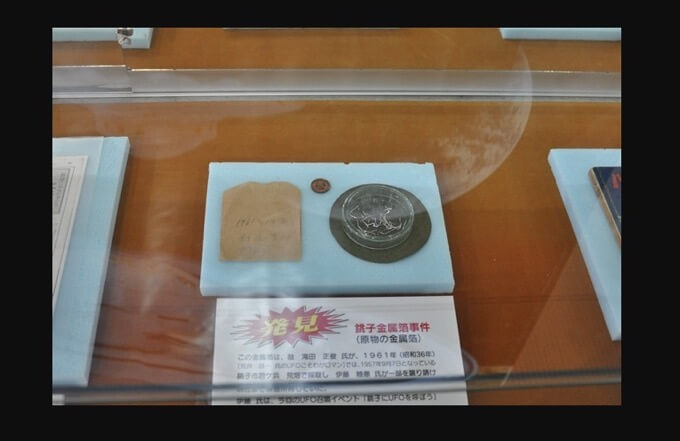
The View from the US Air Force Attaché
At the embassy, Arai and Shibano met with Major Lamore, the Air Force Attaché.
They explained the Choshi incident and asked for his opinion on the fallen material. Major Lamore stated:
“The U.S. military conducted exercises in the vicinity of Choshi on September 9th, but not on the 7th. While we do use metal strips for radar jamming experiments, we would typically release various sizes of chaff simultaneously. It’s unlikely we would use only one specific small size. In any case, I will forward the material to the U.S. Far East Air Force for analysis. I should have a response for you in about a week.”
At the same meeting, Arai also asked the Major for an introduction to American UFO research groups, and he agreed.
A week passed. Then a month. There was no word from Major Lamore. Finally, an impatient Arai phoned the embassy. The Major’s response was a single, terse sentence.
“The material was from the U.S. military.”
Arai pressed for more information, but Lamore refused. It was “no comment” from there on out. The metal fragments they provided were never returned.
Nearly a year later, Arai received a call from the technician at the Industrial Promotion Hall. He had seen a foreign press report about a similar incident, where metallic fragments had fallen from a UFO.
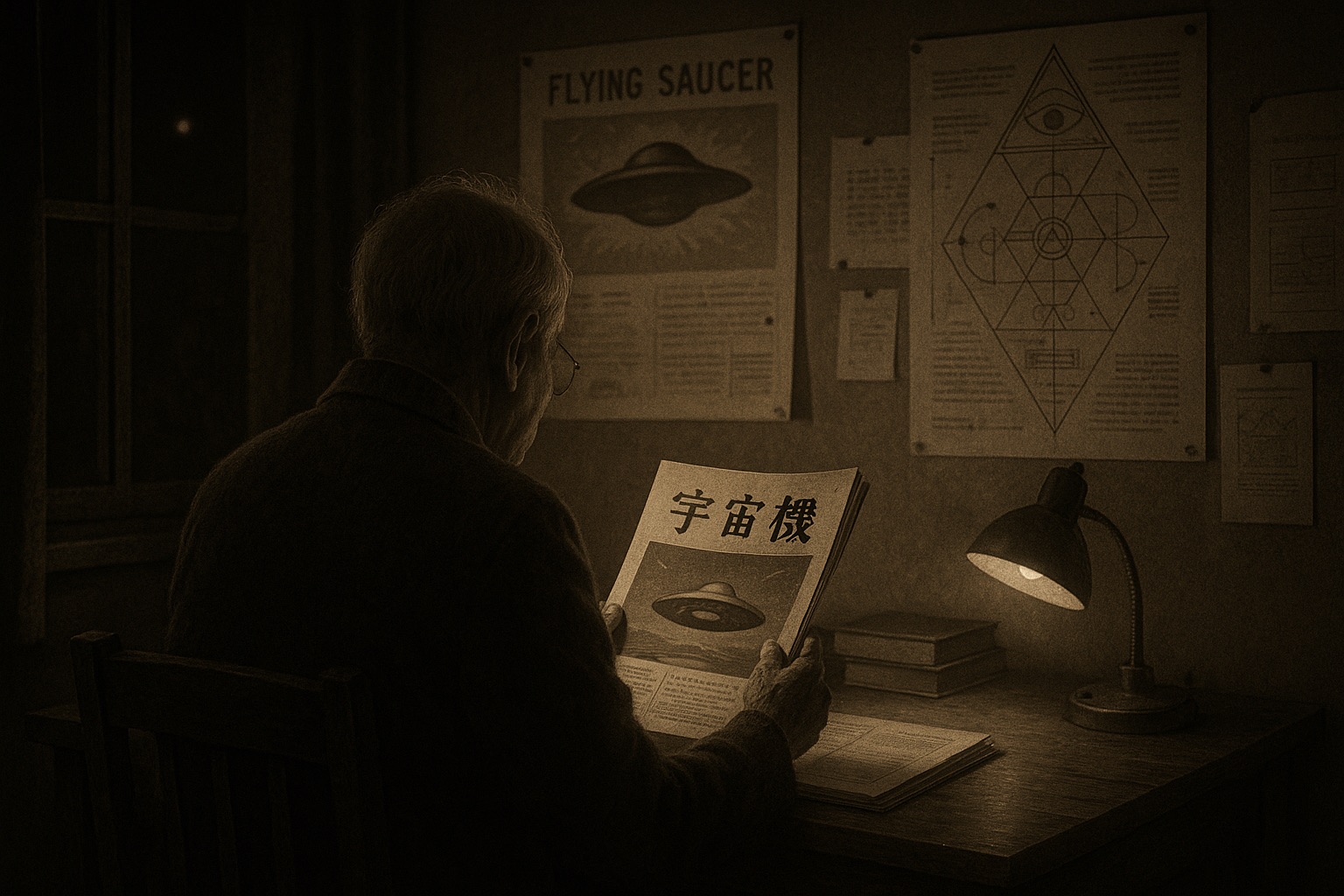
In the end, there was no conclusion. If Major Lamore’s final word is to be believed, the fragments were man-made by the U.S. military for some unknown purpose. But why they were scattered over Choshi remains a complete mystery. Furthermore, Lamore’s own initial statement that the U.S. military was not active on September 7th, combined with reports of similar falls overseas, raises the undeniable possibility of a cover-up.
I remember once visiting Arai at his UFO library and asking him about the Choshi Incident. He spoke with a conviction that the U.S. government was hiding something significant about UFOs.
But the final answer? To this day, the truth remains unknown.
※ Unauthorized reproduction, video creation, and uploading of this article's content to YouTube, blogs, or other platforms is strictly prohibited.
Related Articles

The JAL Flight 1628 UFO Incident: Declassified Files Reveal a 50-Minute Encounter Over Alaska

The Enigma of Mt. Minakami: Japan’s Mysterious Pyramid and UFO Base?

Shocking UFO Sighting in Tokyo: Analysis Reveals 3 “Capsule” UFOs Vanishing and Reappearing

Mysterious Phenomenon Encountered by a Large Cruise Ship in Alaska – Record of Pale UAP
Popular Series
This is the page for The Choshi Incident: Unraveling the Mystery of Japan’s Greatest Forgotten UFO Case. Find the latest news about ChoshiIncident, JapanUFOHistory, UchukiJournal and more on TOCANA - the paranormal news media that stimulates your curiosity
UFO & UAP Latest Articles
The JAL Flight 1628 UFO Incident: Declassified Files Reveal a 50-Minute Encounter Over Alaska
2025.09.09 23:00 UFO & UAP


